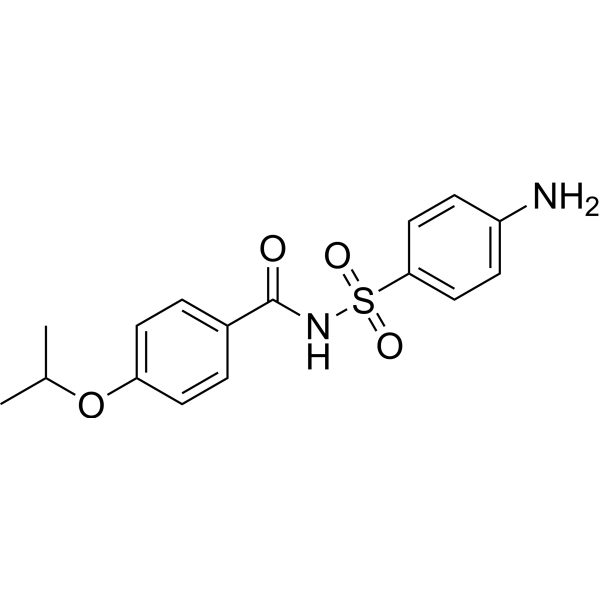
Sulfaproxiline
CAS No. 116-42-7
Sulfaproxiline( Sulfaproxylin | Sulfaproxyline | Sulphaproxyline )
Catalog No. M26469 CAS No. 116-42-7
Sulfaproxiline is a synthetic antibacterial drug of sulfonamide.
Purity : >98% (HPLC)
 COA
COA
 Datasheet
Datasheet
 HNMR
HNMR
 HPLC
HPLC
 MSDS
MSDS
 Handing Instructions
Handing Instructions
| Size | Price / USD | Stock | Quantity |
| 5MG | 101 | Get Quote |


|
| 10MG | 143 | Get Quote |


|
| 25MG | 258 | Get Quote |


|
| 50MG | 375 | Get Quote |


|
| 100MG | 557 | Get Quote |


|
| 500MG | 1197 | Get Quote |


|
| 1G | Get Quote | Get Quote |


|
Biological Information
-
Product NameSulfaproxiline
-
NoteResearch use only, not for human use.
-
Brief DescriptionSulfaproxiline is a synthetic antibacterial drug of sulfonamide.
-
DescriptionSulfaproxiline is a synthetic antibacterial drug of sulfonamide.
-
In Vitro——
-
In Vivo——
-
SynonymsSulfaproxylin | Sulfaproxyline | Sulphaproxyline
-
PathwayGPCR/G Protein
-
TargetAntibacterial
-
RecptorPDE4
-
Research Area——
-
Indication——
Chemical Information
-
CAS Number116-42-7
-
Formula Weight334.39
-
Molecular FormulaC16H18N2O4S
-
Purity>98% (HPLC)
-
Solubility——
-
SMILESCC(C)Oc1ccc(cc1)C(=O)NS(=O)(=O)c1ccc(N)cc1
-
Chemical Name——
Shipping & Storage Information
-
Storage(-20℃)
-
ShippingWith Ice Pack
-
Stability≥ 2 years
Reference
1.Bruno O, Brullo C, Arduino N, Schenone S, Ranise A, Bondavalli F, Ottonello L, Dapino P, Dallegri F. Synthesis and biological evaluation of neutrophilic inflammation inhibitors. Farmaco. 2004 Mar;59(3):223-35.
molnova catalog



related products
-
Ceratotoxin B
Ceratotoxins B is antibacterial peptide produced by the sexually mature females of Ceratitis capitata.
-
FN075
FN075 is a small-molecule inhibitor targeting Escherichia coli amyloid biogenesis and biofilm formation.
-
Lysostaphin
Lysostaphin is a potent antistaphylococcal compound that exhibits enzymatic activity through three distinct enzymes: glycylglycine endopeptidase, endo-β-N-acetyl glucosamidase, and N-acetyl muramyl-L-alanine amidase.



 Cart
Cart
 sales@molnova.com
sales@molnova.com


